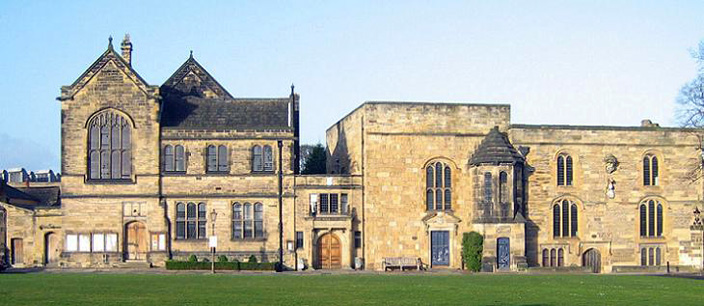The original boundaries of the World Heritage Site (as inscribed by UNESCO in 1986) only included Durham Cathedral and Castle. This reflected an earlier understanding of architectural heritage as being ‘historic monuments’. The commonly-accepted understanding of architectural heritage today recognises that buildings need not be monumental to be valuable — small, everyday buildings and spaces can also tell an important story or be remarkably significant. It also recognises that buildings don’t necessarily have to be extremely old to be important.

Palace Green Library, a group of buildings ranging in date from the 15th century to the 1960s. These are among the buildings that only became part of the Site after its extension in 2008. The library's older buildings are integral to the history of the Durham Palatinate.

Extension of the Site in 2008
Thinking of Durham's architectural heritage from a contemporary point of view led to the realisation that the boundaries of Durham World Heritage Site had been drawn too tightly — they did not fully encompass all the important components of the site. The Durham site was re-evaluated and it was decided to include the buildings and spaces around the Cathedral and Castle. The extended site now includes many of the non-religious components of the Prince-Bishops complex. Among these are Palace Green, formerly a market place, former almshouses, a grammar school, a courthouse, and a library. The new Durham World Heritage Site boundaries were formally approved by UNESCO’s World Heritage Committee in August 2008.
LEFT: Map showing the original 1986 site boundaries (orange) and the revised 2008 site boundaries (blue) in relation to the Cathedral and Castle.

